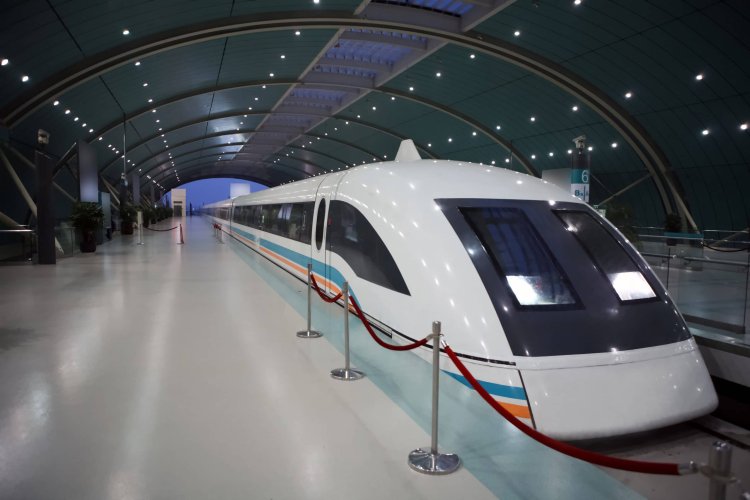The Chinese can now transmit energy wirelessly

Chinese scientists have developed a method of wirelessly transferring energy to a maglev train while it is running. According to the researchers involved in the project, the high-speed prototype achieved unprecedented efficiency during the test drive. While the energy efficiency of a typical wireless smartphone charger is about 50%, the maglev train in Qingdao in the eastern Chinese province of Shandong is designed to run at a maximum speed of 600 km / h and is also buoyed by magnetic force, could draw electricity from transmission coils on rails with an efficiency of up to 92.4 percent.
Energy supply has been a major technological challenge in high-speed maglev technology. Although the train itself is powered by magnetic force, most of the equipment in it needs electricity. The battery is considered an excessive and heavy source of power and the cables are not able to withstand the heat and wear that occur when in contact with power lines at extreme speeds. The linear motor, a traditional method of wireless power used in Japanese and German maglev trains, can generate electricity at high speed by obtaining energy directly from the magnetic driving force.
However, electric turbulence in the narrow gap between train and rail could, according to some estimates, reduce energy transmission efficiency by more than 50%. The wireless power transmission system developed by the team led by Wu Donghua of CRRC Qingdao Sifang can be compared to an induction cooker. It is designed to convert a direct current into a magnetic field using copper coils mounted on the side of the rail. As the train passes through the charged coils, the antenna at its bottom intersects the magnetic field and produces electricity by induction.
However, implementing this idea in real life was not easy, as the additional magnetic field could disrupt the magnetic force that propels the train forward. Much of the magnetic energy could also escape into the environment, reducing overall efficiency. To overcome these obstacles, Wu and his colleagues focused on some minor details that were often neglected, such as how the transmitting coil was connected and the shape of the receiving antenna. Their new technology could supply the train with more than 170 kilowatts of power at all speeds, which exceeds the requirements of electronic equipment in a single-carriage prototype.
The problem with charging a train traveling at 600 km / h is feeding the coil, which would take at least a second. One of the coils developed by Wu's team was more than 20 meters long and the train would pass it in an instant. The proposed technology would require an extremely powerful and precise control system that would switch on the coils just before the train arrived and switch them off after it passed, otherwise the overall efficiency would be significantly reduced. And since there is a gap between the coils, the train would also need an extremely powerful energy management system to ensure a continuous and stable supply.





























